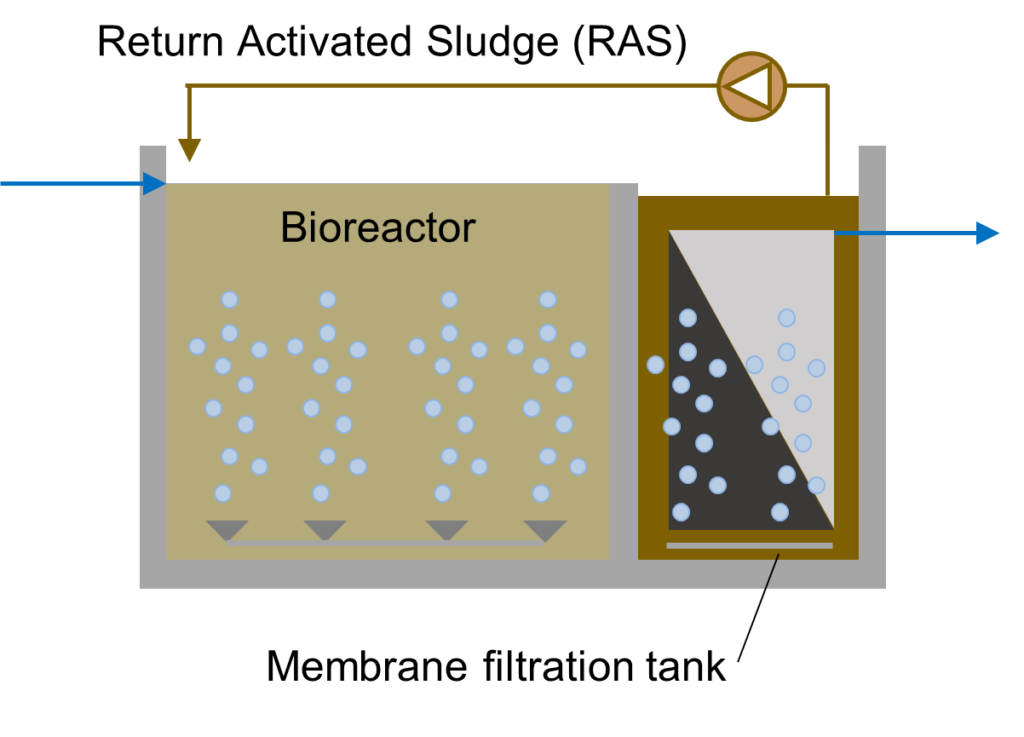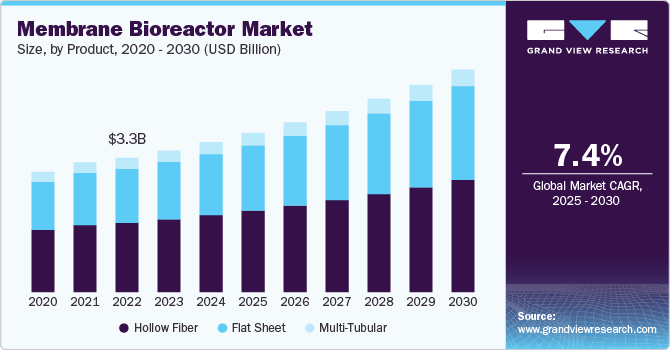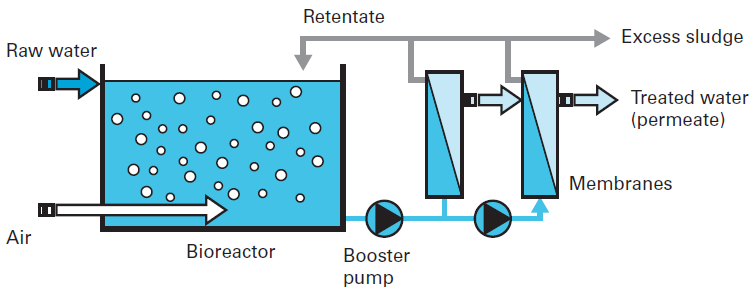Membrane Bioreactor vs. Traditional Treatment Methods: Key Differences Explained
Membrane Bioreactor vs. Traditional Treatment Methods: Key Differences Explained
Blog Article
Membrane Layer Bioreactors Described: Reliable Solutions for Tidy Water
Membrane bioreactors (MBRs) have actually emerged as an innovative service for addressing the pushing difficulties of wastewater treatment - Membrane Bioreactor. By incorporating organic procedures with sophisticated membrane layer filtration, MBRs not only boost the quality of cured water yet also reduce the spatial demands of therapy centers.

What Are Membrane Layer Bioreactors?
Membrane layer bioreactors (MBRs) are innovative wastewater therapy systems that incorporate biological degradation processes with membrane filtering modern technology. This assimilation enables the reliable removal of impurities from water, making MBRs a preferred option in numerous applications, consisting of local wastewater therapy and industrial effluent administration.

One of the crucial benefits of MBRs is their ability to produce high-grade effluent, often ideal for reuse in irrigation or industrial procedures. In addition, MBRs need a smaller sized footprint compared to conventional therapy systems, making them excellent for city setups where room may be restricted.
Furthermore, MBRs can efficiently deal with differing influent loads and are less vulnerable to the effects of toxic shocks. These characteristics contribute to their expanding appeal as a sustainable remedy for attending to the enhancing demand for tidy water while reducing ecological impacts.
How Membrane Bioreactors Work
While the procedure of membrane bioreactors (MBRs) might seem facility, it essentially focuses on the harmony between organic procedures and membrane layer filtration. MBRs integrate an organic treatment process, usually turned on sludge, with a membrane splitting up system to treat wastewater efficiently.
In an MBR system, wastewater is first presented into a bioreactor where bacteria degrade raw material and other impurities. The biological task minimizes the focus of contaminants while advertising the growth of biomass. Following this organic treatment, the blended liquor undergoes membrane layer filtration, which can be microfiltration or ultrafiltration, relying on the preferred effluent high quality.
The membrane layers serve as a physical obstacle, enabling water and little solutes to pass while preserving suspended solids and larger molecules. This makes it possible for the system to keep a high focus of biomass within the reactor, enhancing the therapy performance.
Additionally, the constant separation of cured water from the biomass facilitates a small style and reduces the impact of the treatment facility. On the whole, the combination of biological degradation and membrane filtering in MBRs leads to effective and trustworthy wastewater therapy, guaranteeing top notch effluent ideal for different applications.
Benefits of MBR Technology
One of the vital advantages of membrane layer bioreactor (MBR) technology is its capability to create high-quality effluent with a considerably decreased impact contrasted to traditional wastewater treatment techniques. MBR systems efficiently integrate biological therapy and membrane layer filtering, leading to exceptional elimination of contaminants, consisting of put on hold solids, pathogens, and raw material. This capacity causes effluent that usually meets or exceeds rigid regulative criteria for reuse and discharge.
Additionally, MBR modern technology permits higher biomass concentrations, which enhances the treatment effectiveness and reduces the needed reactor quantity. This portable style is particularly beneficial in city areas where space is limited. The operational adaptability of MBR systems likewise suggests they can adjust to varying influent qualities and flow prices, making them appropriate for a vast array of applications.
Furthermore, the lowered sludge production connected with MBR procedures contributes to decrease functional and maintenance costs. The membranes work as a physical barrier, reducing the threat of blocking and enabling longer functional periods in between cleaning. In general, the benefits of MBR modern technology make it an appealing solution for lasting wastewater treatment, dealing with both ecological problems and the need for reliable resource monitoring.
Applications of Membrane Layer Bioreactors
With their adaptability and efficiency, membrane bioreactors (MBRs) discover applications throughout different sectors, consisting of metropolitan wastewater treatment, industrial processes, and also water recovery. In community settings, MBRs offer a small remedy for treating wastewater, successfully getting rid of pollutants while concurrently producing high-grade effluent that satisfies strict governing standards. This makes them particularly suitable for locations with limited room.
In commercial applications, MBR modern technology is made use of for dealing with procedure water, particularly in industries such as food and beverage, drugs, and petrochemicals. These markets take advantage of MBRs' capability to handle high natural tons and their efficiency in recovering important sources from wastewater, such as nutrients and water.
Moreover, MBRs play an important function in water recovery initiatives, enabling the reuse of treated wastewater for irrigation, commercial procedures, or even as potable water after additional treatment (Membrane Bioreactor). Their effectiveness in getting rid of pollutants and pathogens makes them a trustworthy choice for ensuring water top quality in various reuse applications
Future of Water Treatment Solutions
The future of water treatment services is positioned for transformative improvements driven by technological technology and raising ecological recognition. As Visit This Link worldwide water scarcity comes to be a pressing issue, brand-new approaches, consisting of membrane bioreactor (MBR) systems, are established to play an essential role in boosting the performance and sustainability of water treatment procedures.
Emerging modern technologies such as expert system and maker knowing are expected to enhance therapy procedures, enabling real-time monitoring and anticipating maintenance. This will boost the general integrity and performance of water treatment facilities. In addition, developments in membrane products, such as graphene and nanofiltration, guarantee to raise permeation rates and reduce fouling, leading to reduced energy intake and operational prices.
Additionally, the combination of renewable resource sources right into water treatment plants will add to greener techniques. The round economic situation model will additionally acquire traction, encouraging the healing of valuable resources from wastewater, such as nutrients and power.
Verdict

Membrane layer bioreactors (MBRs) have arised as a sophisticated service for resolving the pressing obstacles of wastewater treatment. By incorporating biological processes Recommended Site with sophisticated membrane purification, MBRs not just boost the quality of treated water yet likewise decrease the spatial requirements of treatment centers.One of the key benefits of membrane bioreactor (MBR) technology is its capability to generate premium effluent with a considerably lowered footprint contrasted to traditional wastewater therapy methods.With their adaptability and performance, membrane layer bioreactors (MBRs) locate applications throughout different markets, including metropolitan wastewater therapy, commercial processes, and even water recovery.In conclusion, membrane layer bioreactors represent a significant development in wastewater treatment modern technology, incorporating biological procedures with reliable membrane layer filtration to create high-quality effluent.
Report this page